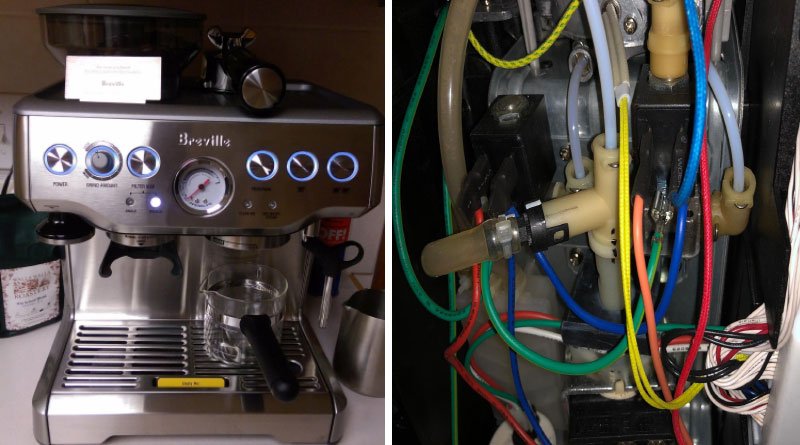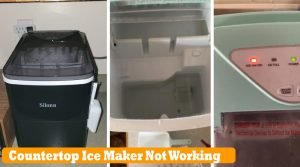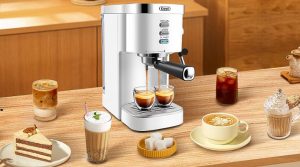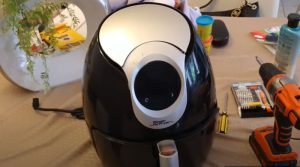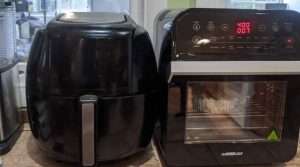Breville Espresso Machine Troubleshooting: Expert Tips
Breville Espresso machine troubleshooting is not only a practical skill but also an essential one, particularly for those serious about their craft.
For home baristas and espresso aficionados, the journey to the perfect cup of espresso is akin to an art form – patience, precision, and practice are essential. A tool often revered in this pursuit is the espresso machine, a marvel of engineering that, when working as expected, can extract a shot of heaven. However, these machines, even the most reputable ones like Breville, are not immune to the occasional glitch.
In this expansive guide, we will delve into common issues associated with Breville espresso machines, understand their root causes, and provide actionable solutions to keep your machine running at its peak.
Breville Espresso Machine Troubleshooting: resolving problems
Over time, your Breville espresso machine may encounter a range of more irritating than debilitating issues. We will now discuss some common mishaps and offer step-by-step solutions to rectify them.
Machine Not Turning On
A machine that refuses to power up is one of the most alarming issues. Before panic sets in, here are a few checks to conduct:
- Ensure the power cord is plugged into a live outlet and the power switch is on.
- Some Breville models may have safety features such as a magnetic float inside the water tank; the machine won’t start without it, so verify it’s in place.
- Examine the circuit breaker or fuse box in case of a power outage or surge.
If none of these are the source of the problem, it may be an internal electrical issue, in which case professional servicing may be required.
No Water Flow
When the machine powers on but you can’t get water to flow, begin with these troubleshooting steps:
- Check the water tank and ensure it’s filled to the required level.
- Clear any blockages in the water line or group head by running a clean, damp cloth over the dispensing point.
- Some machines have manual water switches that must be activated to begin the flow.
If these basic checks fail to fix the issue, the problem may point to a pump malfunction or an internal mechanism that a technician best diagnoses.
Weak or Inconsistent Espresso Shots
Espresso shots should be consistently solid and flavorful. If you’re experiencing variances:
- Adjust the grind size and dosage. Fine-tune the extraction process by making small changes to the grind and tamp until you achieve the ideal shot.
- An old coffee can produce less flavor and crema. Use fresh, quality beans and consider the roast’s age.
- The group head may be clogged. Regular cleaning with a brush and back flushing can improve the consistency of your shots.
Leaking or Dripping
Leaky machines can lead to a messy countertop and loss of pressure. To fix this, consider:
- Tightening loose connections in the water lines, steam wand, and port filter.
- A ruptured seal, which may need to be replaced.
- Overfilled baskets can cause leaking around the group head. Ensure the correct dose and avoid tamping too hard.
Grinder Problems
Grinding is a critical first step, and if Breville has an integrated grinder, issues can include:
- Blockages or wear in the burrs. Investigate with the grinder empty and see if there’s any foreign object causing an obstruction.
- Inconsistent settings: a maladjusted grinder could lead to over-extraction. Consult machine’s manual for instructions on calibration.
Steam Wand Issues
For those machines with a steam wand:
- If you’re having trouble getting steam, ensure the machine has reached the appropriate temperature.
- Condensed milk can block the wand, so always purge it after each use.
By systematically working through these issues, you can often restore your machine’s functionality without needing to take it in for professional servicing.
Advanced Troubleshooting Techniques
Beyond the basics, mastering more advanced troubleshooting is where the severe enthusiasts separate themselves. Here are some in-depth techniques to address more persistent problems.
Descaling the Machine
Scale build-up can cause blockages and affect the taste of your espresso. Breville machines typically have a descale cycle, which should be performed every few months, depending on usage. Use a descaling solution, follow machine’s instructions, and ensure thorough rinsing afterward.
Cleaning the Group Head
A clean group head is crucial for both taste and functionality. Use a brush to remove old coffee grounds and perform a back flush routine regularly.
A detergent designed for espresso machines can be a more aggressive cleaning option for tough build-up.
Adjusting Grind Size and Dose
Intimate knowledge of grinder’s workings can significantly improve the quality of espresso. Make minor adjustments and take notes on the taste of the resulting shots. As you develop a sense of what works, you’ll be able to determine what’s best.
Temperature Calibration
Temperature is a delicate balance that affects extraction. If machine allows, calibrate the brew temperature based on the coffee you’re using and flavor preferences. This factor can often distinguish a great shot from an exceptional one.
Replacing Parts
At some point, certain parts may need to be replaced. Breville typically offers a range of replacement parts for their machines, from seals and gaskets to pumps and boilers. Consult your manual or reach out to Breville for guidance on changing parts safely.
Preventative Maintenance Tips
Getting preventive measures in place is more cost-effective than waiting for problems to occur. Espresso machines require special maintenance, especially when they are used regularly. Here are some practices that can help prevent issues before they occur.
 Do you know how to brew the perfect espresso at home?
Do you know how to brew the perfect espresso at home?The best prosumer espresso machine will feature advanced features such as PID temperature control and dual boilers so you can brew and steam at the same time.
Regular Cleaning and Maintenance Routines
Developing a regular cleaning routine is one of the best ways to prevent issues. Clean the group head after every use, back flush weekly, and perform full machine cleanings regularly. It ensures that the shots are fresh and flavorful.
Water Quality Management
The quality of water used in your machine can have a significant impact. Hard water can lead to scale build-up. Consider using filtered or distilled water, and always ensure the water tank is filled with fresh and clean water.
Proper Storage and Usage Practices
Store machine in a dry, dust-free environment when it is not in use. Keep it away from extreme temperatures and direct sunlight. Proper usage includes avoiding rapid, repetitive cycles that can wear out components prematurely.
Troubleshooting Case Studies
Sometimes, practical examples can help drive home the art and importance of troubleshooting. Below, we present a couple of case studies to illustrate how the abovementioned steps can be applied.
Case Study 1: Musso Espresso Machine Won’t Turn On
Issue: A Musso espresso machine continually trips the power supply and doesn’t turn on.
Diagnosis: The machine has an internal fault, which requires professional servicing. The recommendation is to contact the manufacturer or a certified technician.
Case Study 2: Leaking Expobar Office Lever Dual Boiler
Issue: The machine leaks around the group head and shuts down after a few seconds.
Diagnosis: The group head gasket is worn out and needs to be replaced. The user can learn this by sourcing the part and following an instructional video.
Final Verdict
Troubleshooting your Breville espresso machine is an essential skill for any home barista. Not only does it save you time and money, but it also deepens your understanding of the intricate mechanisms behind the perfect shot of espresso. Maintenance is an ongoing process, and the more care you put into your machine, the more it will reward you with excellence in each cup.
So, approach your machine’s hiccups with patience and view them as learning opportunities to contribute to your coffee craftsmanship. With this guide, you should be well-equipped to tackle most issues with your beloved Breville espresso maker.
FAQs of Breville Espresso Machine Troubleshooting
Q: Why is my Breville espresso machine not pumping water?
A: This could be due to a blockage in the water line, or the machine might need to be primed. Refer to your user manual for instructions on how to prime your specific model.
Q: What should I do if my Breville espresso machine is not heating up?
A: The heating element or thermostat may be malfunctioning. If resetting the machine doesn’t work, contact Breville customer service or a professional repair service.
Q: Why is my Breville espresso machine leaking?
A: Leaks can occur if the seals are worn out or the water tank is inserted incorrectly. Check these areas and replace any damaged parts.
Q: Breville espresso machine is making coffee too slowly. What’s wrong?
A: This could be due to a blockage in the brew head or the coffee grounds being too fine. Try cleaning the brew head and adjusting your grind size.
Q: Why is the ‘Clean Me’ light on my Breville espresso machine always on?
A: This could indicate that the cleaning cycle was not completed correctly or the machine requires descaling. Follow the cleaning process outlined in your user manual. Always refer to your user manual for specific instructions for your model. If you have lost your manual, you can usually find a digital version online by searching for the model number of your espresso machine.

